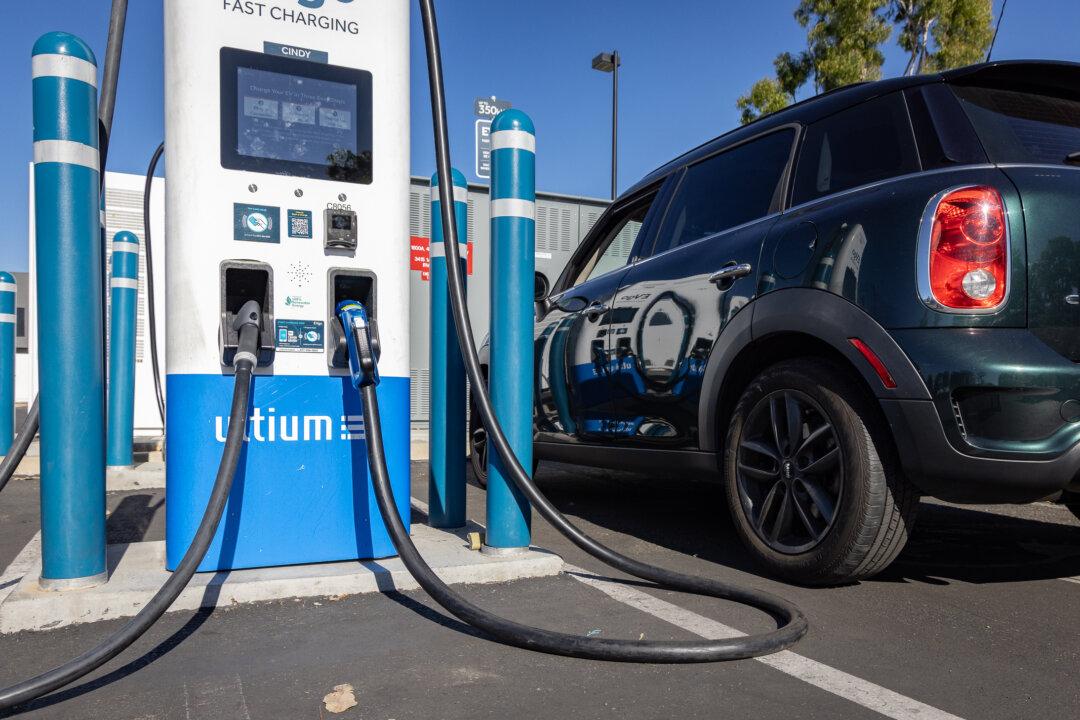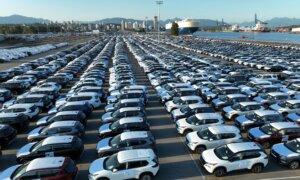The California Energy Commission approved a $1.9 billion plan Feb. 14 to bring more hydrogen refueling and electric vehicle charging stations to cities across the state.
The new stations will be able to refuel and recharge light, medium, and heavy-duty zero-emission vehicles, creating what the agency says will be the most extensive such network in the nation.
The agency said the four-year plan devotes half the funds to priority populations, which include low-income and disadvantaged communities, such as disabled or homeless people.
The investment plan is part of a larger $48 billion California Climate Commitment announced in 2021. That program includes $10 billion for zero-emission vehicles and their infrastructure, but the state has also received billions from the Biden administration for the same, according to officials.
The most recent contribution will produce 40,000 new chargers to add to the nearly 94,000 public and shared private chargers that are currently installed. The state is expecting to reach 250,000 chargers in the next few years, according to the commission, which doesn’t include private installations and home chargers.
“We need to make sure that this is zero-emission refueling infrastructure for everybody,” said Patty Monahan, the agency’s lead commissioner for transportation. “By investing a bulk of funds to benefit low-income and disadvantaged communities, the state is making sure communities most in need have better access to chargers and less pollution from trucks and buses.”
Over the next four years, competitive grants will be used to distribute the new funds in the form of direct incentives and rebates for businesses, nonprofits, organizations, tribes, and public agencies, according to the agency.
A breakdown of the funds shows nearly $658 million will be used to create chargers for electric cars, trucks, and SUVs. More than $1 billion will fund electric and hydrogen chargers for zero-emission large trucks and buses.
Since 2007, about $1.8 billion has been invested in California for zero-emission vehicles and alternative fuels under the Clean Transportation Program, which was designed to advance the state’s climate change policies. Under the program, 59 percent of total funding to date has been distributed to disadvantaged and low-income communities, according to the agency.
The program has also provided for about half of the electric vehicle chargers in the state and nearly 100 hydrogen fueling stations—with 61 open today—and has provided funding to public school districts for electric school bus charging, among other things.
The agency says about 7.1 million electric vehicles are needed with 1 million chargers by 2030, in addition to 155,000 electric trucks that will require 114,500 chargers. By 2035, there should be 15.2 million electric vehicles with 2.1 million chargers. By the same year, there should be 377,000 electric trucks and buses, which will require 264,000 chargers, according to official estimates.
So far California has kept up with its aggressive zero-emission goals, according to the agency, which revealed a quarter of the new cars sold in California in 2023 were electric. California is two years ahead of schedule for building chargers and one year ahead for its goal to build 10,000 fast chargers, the agency said.







